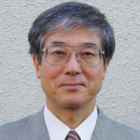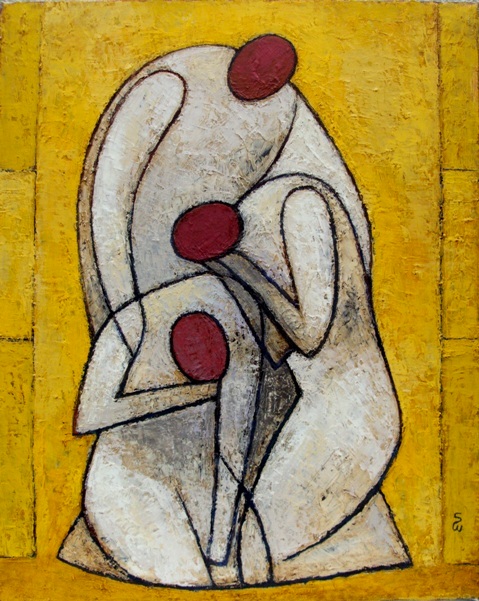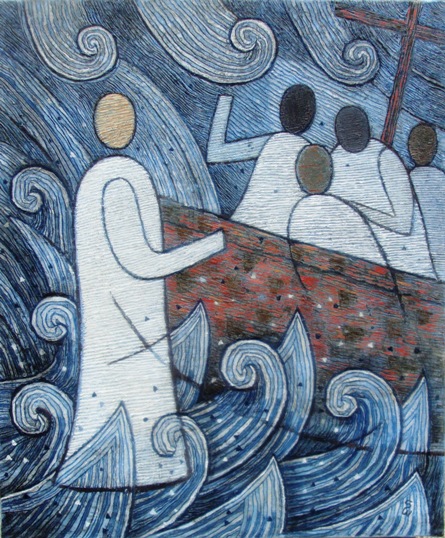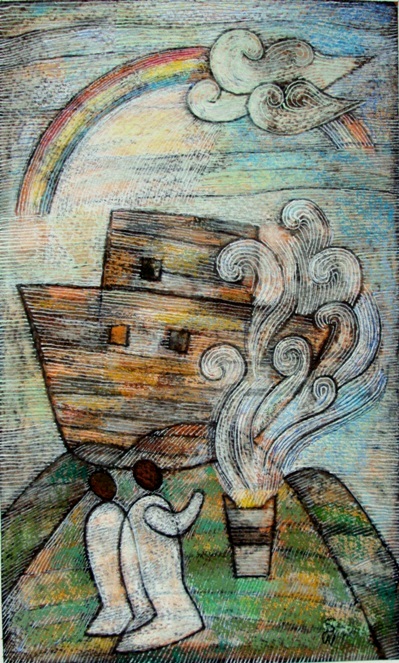Artists






Watanabe, Soichi
Soichi Watanabe
Bio
Soichi Watanabe was born in Ishinomaki City, north-east Japan, in 1949 and lives in Koshigaya City, Saitama. Watanabe graduated in 1982 from the Ochanomizu Art School in Tokyo after having acquired, a decade earlier, an economics degree from Tohoku Gakuin University in Sendai. He teaches at a private art school that he started in 1982.

Watanabe is a member and former chairman of the Christian Art Association in Japan (JCAA), the Asian Christian Art Association (ACAA) and the Japan Artists Association (JAA). He was the 2008–09 artist in residence at the Overseas Ministries Study Center in New Haven, USA. His oil paintings have been displayed in numerous solo exhibitions in Japan, the USA, Geneva and Germany.
Motivation and Inspiration
What is the ideal form of art for Christian art in Japan in the present age? This is the question I have been struggling with in my paintings. My tendency towards abstraction originated during my visit of the exhibition of Ben Nicholson in 1982 in Tokyo. The beauty of the simple form in his works was so impressive to me that I felt convinced I should incorporate his style into my work in my own way.
My interest was also aroused by the works of Picasso, Matisse, Klee, the German Expressionists and the sculptors Henry Moore and Constantin Brancusi. Also ancient Greek art (e.g. Cycladic sculptures) and the Chinese and Japanese traditions of Suibokuga employing Indian ink have had an influence on my work, as well as the simple and unsophisticated works in the Japan Folk Crafts Museum, Korean art of the pre-modern Yi Dynasty, and Romanesque art.
Books about art have enlightened me as well. The book entitled Pursuit of the European Mind: Innovative 12th Century, which was edited by Prof. Yozo Horigome of Tokyo University, guided me further to read Theory of Christian Art written by Prof. Munemoto Yanagi, one of the great art historians.
I realize in retrospect that the content of my works is my own humble response to God’s work in my life. I was led to the Christian faith by Prof. Mitsuo Miyata, scholar of political history of Tohoku University, at the Student Bible Study Class in his home in 1971-73. It was in 1980 at a Bible Study OB retreat meeting when Prof. Miyata referred to Albrecht Dürer, the great German artist, whose artworks and way of life made clear to me that it is possible to be an artist as well as a Christian. From his book Spirits of the Reformation I came to see that Rembrandt’s art was a confession of faith and J.S. Bach’s music an offering to God.
Since the 1980s I have tried to clearly express the essence of my faith and the biblical stories in my work, first in a realistic style, followed by paper cut printing, and presently in a semi-abstract style. My paintings are simple and symbolic; faces for example have no eyes, nose and mouth.
In 1972 I read in a book by Albert Schweitzer that when we encounter Jesus, we don't know who he is. When the disciples encountered Jesus by the seaside, they didn't know who he was. But they followed his call. Schweitzer heard God's call when he came across an appeal in a newspaper for doctors to be missionaries in Africa. After ten years of studying medicine he threw away the status of professor of theology and professional organist and followed Jesus. I was led to the Christian faith by some teachers, friends and books. Now I realize that these persons and these books were really Jesus by the seaside.
1. Together with those who weep, 2011, oil on canvas, 50.5 x 40.5 cm.
2. Ego eimi, I am, Do not be Afraid, 2011, oil on canvas, 45.5 x 38 cm. When the disciples were worried by the wind and waves, Jesus said to them, “I am (with you),” as he stretched out his hands to save them. Ever since Prof. Mitsuo Miyata taught me the meaning of “I am; Ego eimi” 40 years ago, I have kept his teaching in mind. Three years ago Prof. Kenichikida showed me that the name of God “I am; ehyeh” means that he is with us in trouble and in the future. I was touched by knowing that Jesus was with the disciples in the wind and waves, encouraging his disciples with these words.
3. The Almond tree – a Sign of Hope, 2008, oil on canvas, 33.3 x 24.2 cm.
4. Reconciliation, 2010, mixed media; pastel and watercolor, 22.3 x 13.6 cm.
5. Offering to God and God’s promise, 2011, 22.3 x 13.6 cm.
Permanent works
Tohoku-Gakuin University, Meiji-Gakuin University, Soshin-Gakuin School, Shinshyo Christian Church, Omiya Church, Sendai Shoryo Church, Kyoto Church, Kichijoji Catholic Church, Sapporo Hokkou Church, Mitaka Church in Japan, Overseas Ministries Study Center in New Haven, Yale University Institute of Sacred Music, Beeson Divinity School in America, Evangelishe Akademie Loccum in Hannover, Tunabergskyrkan, the Tunaberg Church in Uppsala.
Publications
Jesus Walking with Us (Shinkyo Shuppansha, 2004, JPY 1,995)
For the Least of These (OMSC, 2010, US$ 19.95)
With Joy and Sorrow (Kyobunkan, 2006, JPY 1,575)
Soichi Watanabe has presented his paintings for cover illustrations to the monthly Protestant magazine Gospel and World since 1997.


